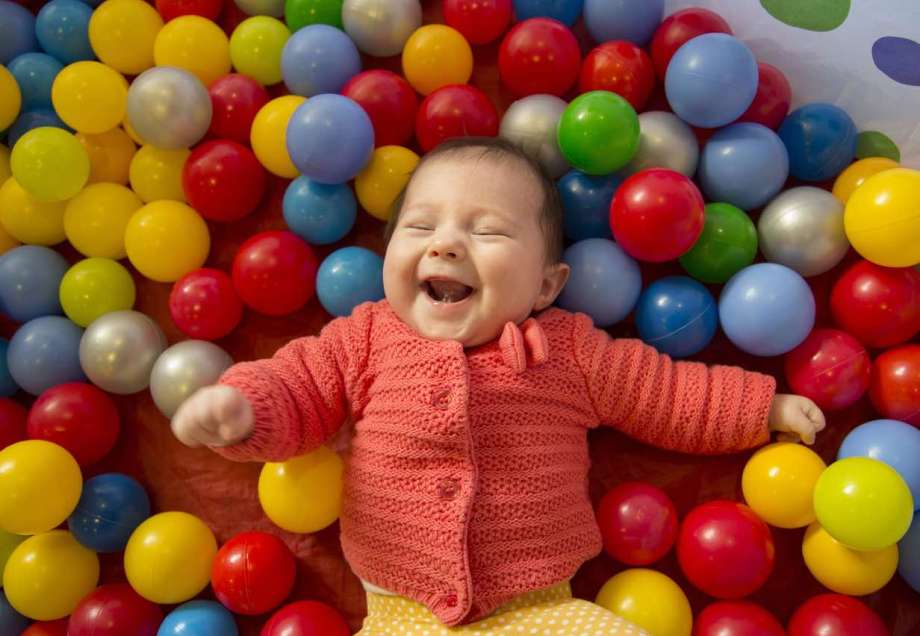A Complete Guide to Infant Reflexes

This article provides a complete guide to the different newborn reflexes. It explains the important reflexes that indicate normal development, the types of reflexes that disappear as your infant grows, and the ones that remain throughout adulthood.
Infant Reflexes

New parents are often more familiar with their baby’s reflexes than they realize. Although you may not officially be aware of what they are or know their names, these reflexes involve things you probably notice your baby doing every day.
Reflexes are involuntary muscle reactions to specific stimulation. When an involuntary movement occurs, your baby is not in control of the moment – it is automatically triggered. Infant reflexes help your baby survive and protect them from the environment.
Your baby’s pediatrician will be checking all of your baby’s reflexes during routine newborn examinations and appointments in order to ensure your baby is developing healthily and will pay special attention to them if you have any concerns about your baby’s development.
Normal Infant Reflexes
There are 7 essential infant reflexes that indicate normal baby development.
1. Moro or Startle Reflex
This reflex is one of the easiest ones for parents to recognize. Loud noises or sudden movements such as a quick change in position can stimulate this reflex. With the startle or Moro reflex, your baby should throw his or her arms and legs outward, cry loudly, and then draw them back in. This reflex helps your baby survive if someone covers their face all of a sudden.
If your baby doesn’t have a Moro reflex or only responds with one side of their body or one arm, it can indicate a problem that your pediatrician may want to investigate. The Moro reflex is present at birth and usually goes away by two months.
2. Tonic Neck Reflex
This is an interesting reflex that may be difficult to notice. It is also called ‘fencing posture’ because when you see it, it looks like your baby is in a fencer’s stance.
In response to turning their head to one side, this reflex causes a relaxed baby to straighten their arm with their hand partially opened on that side and bend the arm while tightening their hand into a fist on the other side.
When you turn your baby’s head to the other side, they will reverse the positioning of their arms and hands. The tonic neck reflex usually goes away by five to seven months.
3. Babinski Reflex

Notice what happens when you firmly stroke your infant’s foot from its heel to the toe. Their big toe moves upward or toward the top surface of the foot, while the rest of the toes open up and separate. This is called the Babinski reflex or Babinski sign. In 1896, the neurologist Joseph Babinski discovered this reflex and named it after himself.
This reflex can appear in children up to two years of age. For some infants, it may disappear as early as one year of age.
5. Grasp Reflexes (Palmar Reflex and Plantar Reflex)

Why does your baby tightly grab your finger when you put it into their hand? That’s the palmar grasp reflex and it is also the easiest one to recognize. You may also notice that when you try to pull away, they grip even harder. The palmar grasp reflex doesn’t usually disappear until your baby is five to six months old.
The plantar grasp reflex also occurs in the feet. When you put your finger under your infant’s toes, they will curl around it. The plantar grasp usually goes away when your baby is nine to twelve months old.
5. Sucking Reflex
When you touch your newborn’s mouth or place your nipple into their mouth to begin breastfeeding, they will start sucking. The sucking reflex helps your baby eat and is a survival instinct. This is a natural instinct; however, it is a complicated task for your infant as they still need to learn how to coordinate sucking, breathing, and swallowing simultaneously.
6. Rooting Reflex
The other oral reflex that infants have is the rooting reflex; it helps your baby eat and latch onto a nipple for feeding. You can observe the rooting reflex when your baby’s cheek is stroked or when they are looking for the breast or a bottle when they are ready to eat. They will turn their head in that direction, open their mouth and make sucking motions with their mouth. This reflex typically goes away at around four months of age.
7. Stepping Reflex
When a baby is placed on the mother’s chest shortly after being born, it will ‘crawl’ to the mother’s breast. This is called the stepping reflex and will usually go away after 2 months.
Then the stepping reflex will reappear at around 12 months of age when your baby is learning to walk. At this time, if you hold your baby upright under the arms while supporting their head and let their feet touch a flat surface, they will put one foot in front of the other as though they are walking.
Reflexes That Won't Disappear

Most newborn reflexes disappear by the end of their first year of life. However, there are some that stick around into adulthood. You might notice these reflexes in yourself.
Blinking reflex: When your eyes are exposed to bright light, you blink automatically.
Coughing reflex: You involuntarily cough when something stimulates your airway.
Gag reflex: When something touches the back of your throat, you gag or feel like vomiting.
Parachute reflex: This reflex develops around when your baby is five to nine months of age or when they start to learn to walk. When your baby falls forward, they protect themselves by extending their arms with their hands open to brace the fall.
Sneeze reflex: When something irritates the inside of your nose, you sneeze.
Yawn reflex: When your body needs more oxygen and wants to remove carbon dioxide, your body yawns.
Observing these reflexes and the time at which they go away can help to make sure that your baby is growing and developing normally. Parents with healthy newborn babies do not need to be testing these reflexes on a regular basis, though. It is just a fun thing to notice.
Every baby is different and develops at its own pace. When they drop their reflexes and reach their milestones are unique to them. Be sure to bring up any issues you have about your baby’s development with your healthcare provider.

